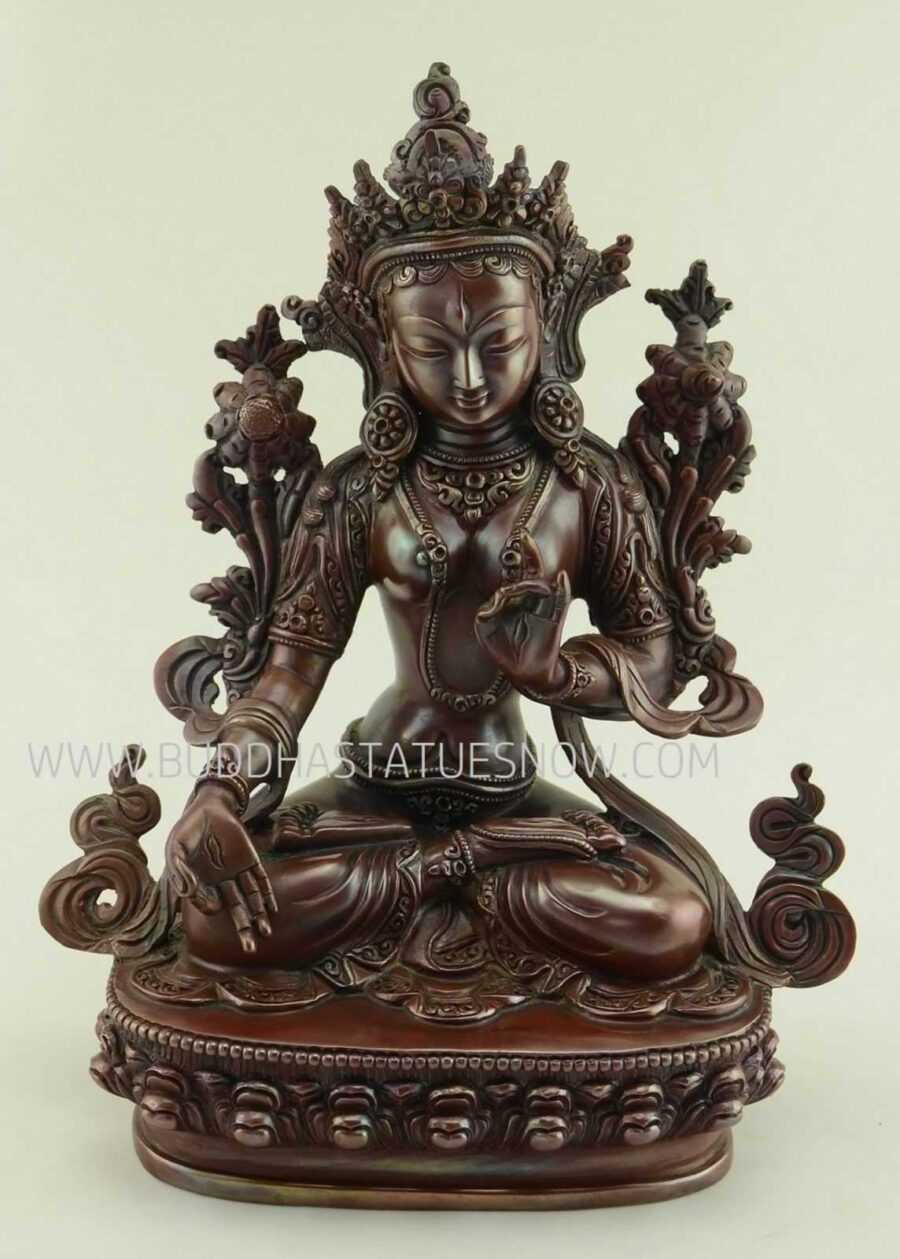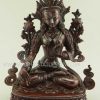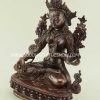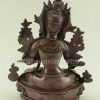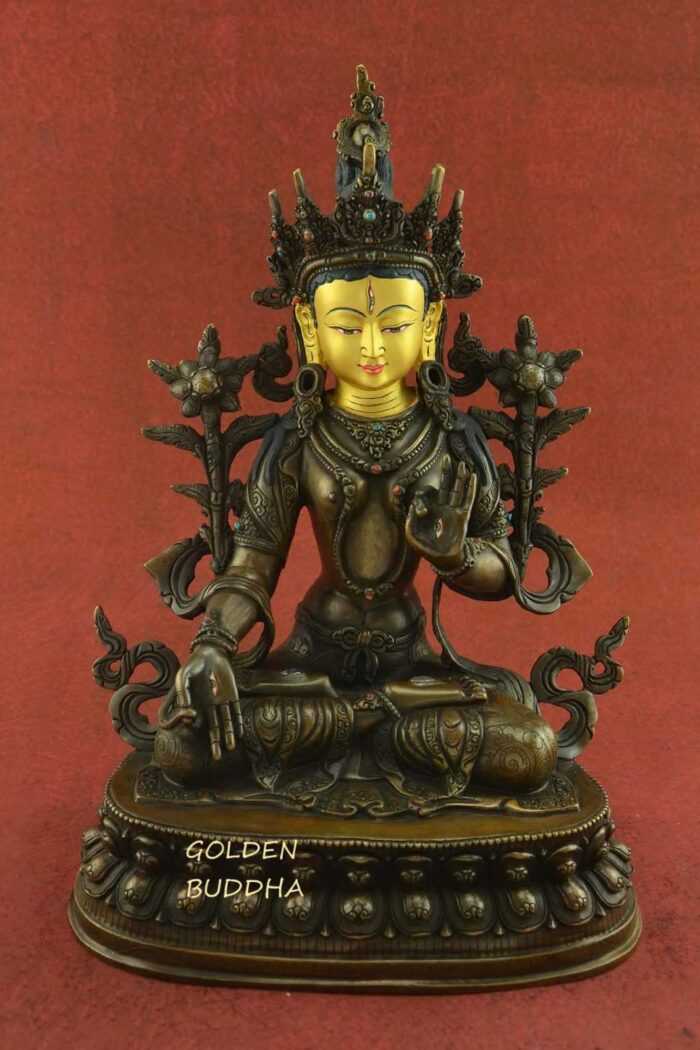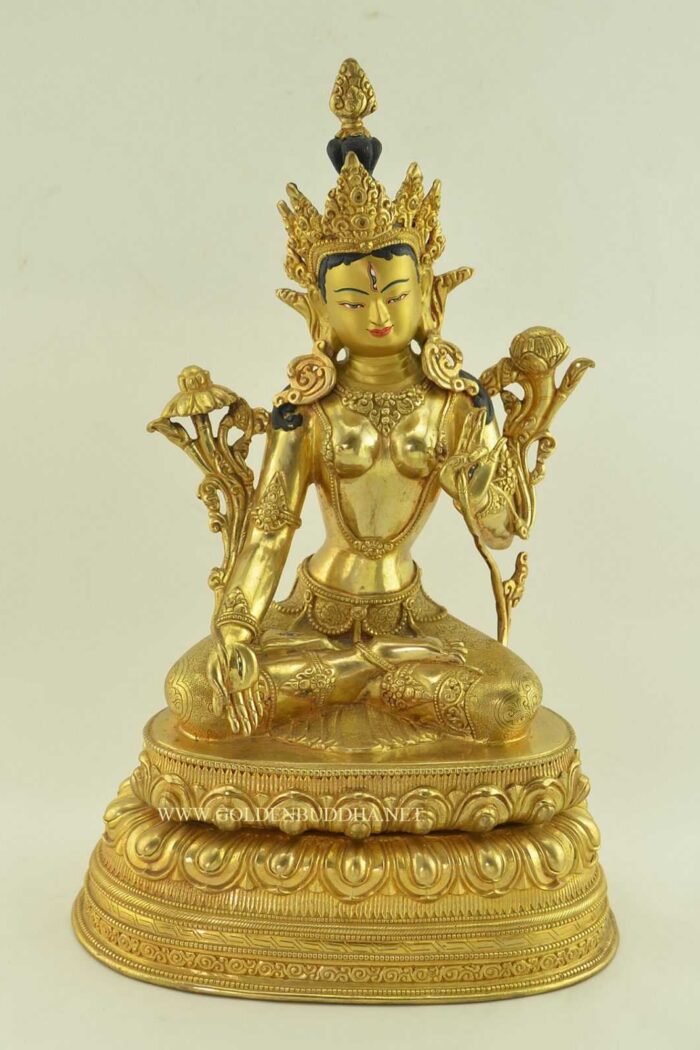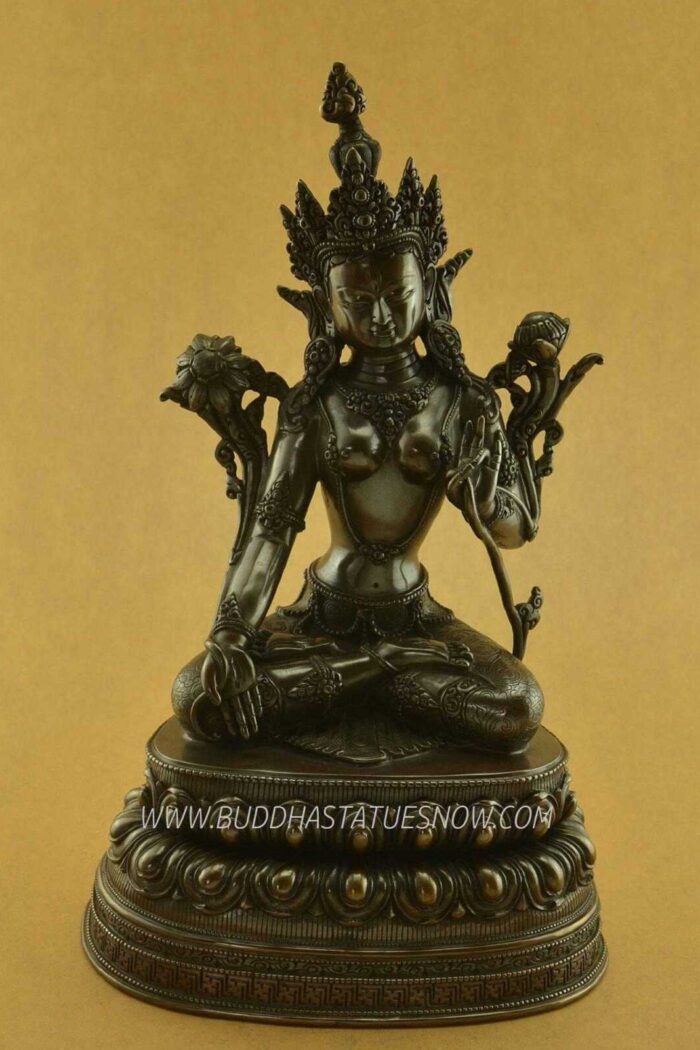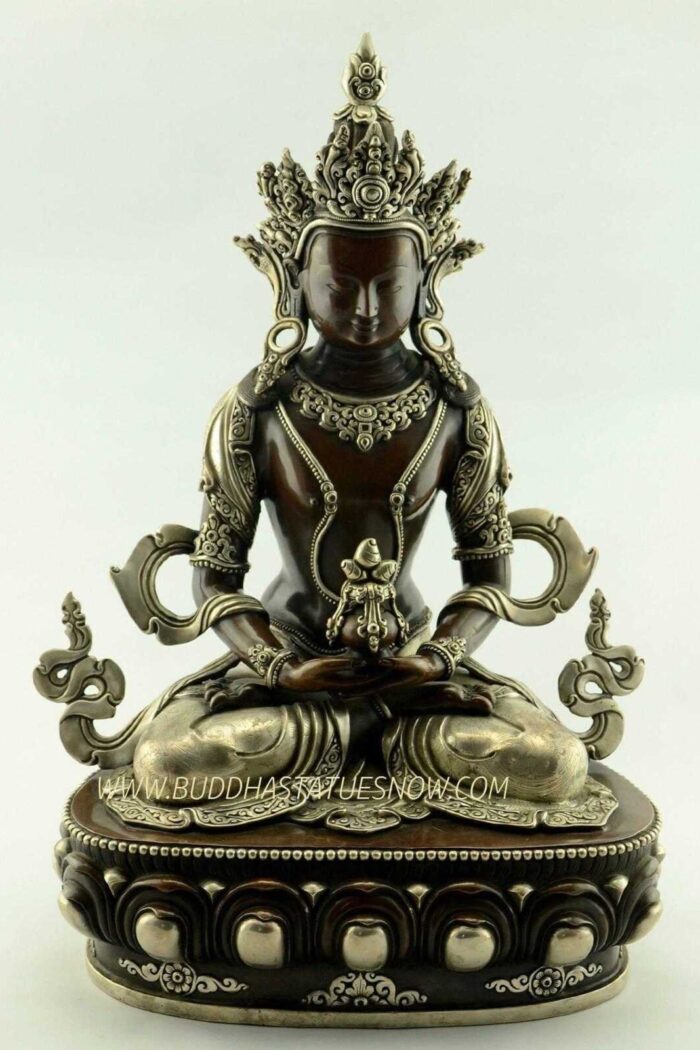Our beautiful antiquated Cintachakra statue is one of the most popular embodiment of the Tara Bodhisattva. Indeed, she has all of the classic features – seven eyes, 2 lotus flowers and she displays important Buddhist mudras. Additionally, Cintachakra is seated in the full lotus pose on a single lotus pedestal. Our Nepali artisan gave the statue an antiquated finish with the use of oxidized copper.
The artisan also completed our antiquated Cintachakra statue with the crown and jewels of a Bodhisattva. At the request of the buyer, we are happy to adorn the crown and jewels of the statue with turquoise and coral stones. The decorations will add to the beautiful decor of the statue and inspire those who see it.
Symbolism of our Cintachakra Statue
Abhaya mudra – this is known as the protection mudra (left hand) and it is one of the oldest and most well respected Buddhist mudras. Indeed, this classic mudra that has been adopted by many Buddhas and bodhisattvas. The Abhaya mudra is important for Cintachakra because it inspires a sense of fearlessness and confidence in devotees. Additionally, Cintachakra has a healing attribute which protects devotees from disease and injury which allows them to obtain long life.
Varada Mudra – is known as the gift giving or boon granting mudra. Indeed, Cintachakra translates as “wish fulfilling wheel”. Additionally, she has the attributes of long life, healing, compassion and serenity which she shares with devotees.
Furthermore, Cintachakra statues depict an embodiment of the world’s first feminist. Tara was very disappointed because there were so few females who had become full Buddhas. As a result, she has refused to be reincarnated as a male until this disparity has been corrected. Click here to learn more about the virtues and aspirations of the Tara Bodhisattva.


